Understanding Cap Rates for Jupiter Investment Properties
Cap rates, or capitalization rates, are a fundamental concept for any investor in real estate. For investors looking at Jupiter, Florida, and the surrounding areas, understanding cap rates is essential for assessing the potential returns on investment properties. This comprehensive guide will break down the concept of cap rates, explain how they are calculated, and explore their role in evaluating Jupiter investment properties. We will also dive into the application of cap rates for properties in Jupiter, highlight the challenges investors face, and provide practical advice for overcoming them.
What is a Cap Rate?
The capitalization rate, or cap rate, is a key metric used in real estate to evaluate the return on an investment property. It is expressed as a percentage and represents the ratio of a property’s annual net operating income (NOI) to its current market value or acquisition cost.
Cap Rate Formula
The basic formula to calculate the cap rate is:
Cap Rate = Net Operating Income (NOI) / Property Value
Net Operating Income (NOI): This is the total income generated by the property minus all operating expenses. It does not include mortgage payments or tax implications.
Property Value: The current market value or the purchase price of the property.
For example, if a Jupiter property generates an annual NOI of $50,000 and is valued at $500,000, the cap rate would be:
Cap Rate = $50,000 / $500,000 = 0.10 or 10%
A 10% cap rate means the investor can expect to earn 10% of the property’s value in net operating income annually.
Why Cap Rates Matter for Jupiter Investment Properties
For investors in Jupiter, cap rates serve as a quick, effective way to compare potential investment properties. They provide insight into the expected return on investment (ROI) without factoring in financing costs or tax consequences. Since Jupiter is known for its desirable location, real estate prices in the area can be higher than other markets, making cap rates even more important in evaluating whether an investment is worthwhile.
Benefits of Using Cap Rates
Risk Assessment: Cap rates can help investors assess the risk of a property. Higher cap rates typically indicate higher risk, as they may suggest that a property’s income is not stable or that the property is located in a less desirable area. Conversely, lower cap rates may indicate lower risk, often associated with prime locations or more stable rental markets.
Comparison Tool: Investors can compare cap rates across multiple properties to quickly determine which ones offer better returns. This is particularly useful when evaluating investment opportunities in competitive markets like Jupiter.
Forecasting Potential Returns: The cap rate can provide an estimate of the return on investment for a property if it is purchased at the current market value. This helps investors predict whether the property will meet their financial goals.
Factors that Affect Cap Rates in Jupiter
Several factors influence cap rates, particularly in markets like Jupiter, which are influenced by both local trends and broader economic conditions.
1. Location and Market Demand
The location of an investment property plays a major role in determining its cap rate. Jupiter’s strong demand for both vacation rentals and long-term rentals often results in lower cap rates due to the area’s desirability. Properties located near the waterfront, or in neighborhoods like Abacoa or Avenir, may have lower cap rates due to high demand and a more stable income stream.
2. Property Type
The type of property can significantly affect the cap rate. Single-family homes, condos, and multi-family units may each have different cap rates, as they offer varying levels of income stability, maintenance costs, and tenant demand. Investors in Jupiter should carefully consider the type of property they are buying and its income potential before assessing the cap rate.
3. Property Condition and Age
Newer, well-maintained properties often have lower cap rates than older, less-maintained properties. This is because newer properties tend to generate more reliable rental income and may require fewer immediate repairs. In Jupiter, properties in excellent condition or recently renovated may attract higher-quality tenants, which can lead to more stable cash flows and, in turn, lower cap rates.
4. Economic Conditions
Broader economic factors such as interest rates, inflation, and market trends can also influence cap rates. In a strong economy, demand for rental properties in Jupiter may rise, leading to lower cap rates due to increased property values. Conversely, during economic downturns, cap rates may rise as property values decrease and rental demand weakens.
Common Challenges When Using Cap Rates for Jupiter Investment Properties
While cap rates are a valuable tool, they come with their own set of challenges, particularly in high-demand markets like Jupiter.
1. Limited Accurate Data
In some cases, investors may find it difficult to obtain accurate data on a property’s NOI. Without precise information on expenses or income, cap rate calculations can become unreliable. In Jupiter, where rental markets can fluctuate, relying on outdated or inaccurate data can lead to misguided investment decisions.
2. Cap Rates Can Be Misleading
While a higher cap rate may seem like a good opportunity, it may not always reflect a quality investment. For instance, a property with a high cap rate may have a high risk factor, such as a tenant vacancy rate or high maintenance costs. It’s essential to take a holistic approach to analyzing investment properties, considering factors beyond just the cap rate.
3. Market Variability
In rapidly changing markets like Jupiter, cap rates can fluctuate based on broader market trends. The cap rate you calculate today might not be the same next year due to changes in the rental market, interest rates, or property values. It’s important for investors to stay up-to-date on market trends and adjust their strategies accordingly.
How to Use Cap Rates Effectively for Jupiter Investment Properties
To maximize the effectiveness of cap rates when evaluating Jupiter investment properties, investors should keep the following best practices in mind:
1. Focus on Comparable Properties
When analyzing cap rates, always compare properties that are similar in type, location, and condition. This will help you assess the relative value of a property and avoid making investments based on misleading comparisons.
2. Consider the Long-Term Potential
While cap rates provide a snapshot of potential returns, it’s important to also consider the long-term growth potential of a property. If you’re investing in a property in a rapidly developing area of Jupiter, such as Avenir or Abacoa, the value of your investment may increase over time, despite a lower initial cap rate.
3. Factor in Operating Expenses Accurately
Accurate and up-to-date operating expenses are crucial to calculating a reliable cap rate. Make sure to account for all property-related costs, including property taxes, insurance, maintenance, and property management fees. Failure to do so can lead to an inflated or deflated cap rate, which can skew your decision-making process.
4. Be Aware of Market Trends
Understanding local market trends in Jupiter will help you make informed decisions about cap rates. Track rental demand, property values, and local economic indicators to anticipate changes in cap rates and identify the best time to buy or sell investment properties.
5. Use Cap Rates as Part of a Broader Investment Strategy
Cap rates should never be the sole factor in deciding whether to purchase an investment property. Instead, they should be used in conjunction with other metrics, such as cash-on-cash return, internal rate of return (IRR), and comparable sales data, to build a more complete picture of a property’s investment potential.
By understanding and applying these principles, investors can make smarter decisions in the Jupiter real estate market, maximizing returns and minimizing risks associated with property investment.

Get a Free Rental Analysis
Want to know how much your home will rent for? We’ll send you a free rental report!
Calculating and Interpreting Cap Rates for Jupiter Investment Properties
Accurately calculating and interpreting cap rates is critical when assessing the potential return on investment in Jupiter, Florida. However, investors must understand that cap rates should not be looked at in isolation. Instead, they should be considered in the context of other factors influencing an investment’s overall profitability. In this section, we will explore how to calculate cap rates effectively, interpret them, and use them to make informed investment decisions for Jupiter properties.
How to Calculate Cap Rates for Jupiter Investment Properties
To calculate the cap rate for a specific Jupiter property, you need to gather a few key pieces of information: the property’s net operating income (NOI) and its current market value.
Step 1: Determine Net Operating Income (NOI)
NOI is calculated by subtracting the property’s operating expenses from its gross rental income. Operating expenses include costs such as property management fees, maintenance, property taxes, insurance, utilities, and any other costs associated with maintaining the property.
For example, if a property generates $120,000 in gross rental income annually, and the operating expenses (property taxes, maintenance, etc.) total $40,000, the NOI would be:
NOI = $120,000 (Gross Income) – $40,000 (Operating Expenses) = $80,000
Step 2: Identify the Property Value
The property value can be the current market value or the acquisition cost (purchase price) of the property. In Jupiter, the market value is typically determined by comparable sales, appraisal, or through negotiation with the seller.
For example, if the current market value of a property is $1,000,000, you now have both the NOI and property value to calculate the cap rate.
Step 3: Calculate the Cap Rate
Once you have the NOI and the property value, apply the cap rate formula:
Cap Rate = NOI / Property Value
Using the previous example:
Cap Rate = $80,000 / $1,000,000 = 0.08 or 8%
This means that the property offers an 8% return on the investor’s capital, assuming all factors remain constant.
How to Interpret Cap Rates in Jupiter’s Market
Cap rates vary widely depending on location, property type, and market conditions. In Jupiter, factors like property age, location, amenities, and market demand will influence cap rates. Generally, investors should interpret cap rates as follows:
1. High Cap Rates (8% and Above)
A high cap rate may suggest that the property is in a higher-risk area or that there are higher operational challenges that impact the property’s income. While higher cap rates often reflect better returns on investment, they can also indicate that the property could require more active management or repairs.
For instance, a property located in a less desirable part of Jupiter or one that needs significant repairs may have a higher cap rate to compensate for the higher risk.
2. Moderate Cap Rates (5% to 7%)
Cap rates in the 5% to 7% range are often considered balanced, with moderate risk and relatively stable returns. Properties with these cap rates may offer steady rental income with a reasonable chance of appreciating over time. Jupiter’s upscale neighborhoods, such as Abacoa, Avenir, and those near the waterfront, may offer properties in this cap rate range.
These properties often attract long-term tenants or seasonal renters, providing stable cash flow. They also have the potential for capital appreciation, making them a more attractive choice for risk-averse investors.
3. Low Cap Rates (Below 5%)
Low cap rates typically indicate a lower return on investment, but they often correspond to properties in prime locations with lower risk and stable, predictable income. High-demand areas in Jupiter, such as near the beach or in luxury communities, tend to have lower cap rates.
While the immediate cash flow from properties with low cap rates may not be as high, the potential for long-term appreciation and the lower risk can make them appealing for investors focused on capital growth.
Using Cap Rates to Compare Properties in Jupiter
When evaluating multiple investment properties in Jupiter, it’s important to use cap rates to compare potential returns. However, remember that a higher cap rate doesn’t always equal a better investment. Cap rates should be one part of a comprehensive investment strategy that also considers property type, location, tenant demand, and long-term growth potential.
For example, if you’re comparing two properties:
- Property A: Cap Rate = 6% (Located in a prime area like Abacoa with higher appreciation potential)
- Property B: Cap Rate = 8% (Located in a less desirable area with higher maintenance needs)
While Property B offers a higher immediate return, Property A might provide more long-term value due to its location and potential for property appreciation. In this case, Property A may ultimately be the better investment, depending on your goals.
Assessing Cap Rate Trends in Jupiter
Cap rates in Jupiter can fluctuate over time due to various factors, including changes in interest rates, local market conditions, and broader economic influences. For instance, if interest rates rise, the cost of financing increases, which may lead to higher cap rates as buyers demand higher returns to offset the increased financing costs.
Investors should stay informed about market trends and be ready to adjust their strategies. Monitoring cap rate trends can also help investors determine the right time to buy or sell properties in Jupiter.
For example, if cap rates are increasing due to rising interest rates, it could signal a shift in the market, potentially leading to a decline in property values. Conversely, declining cap rates may suggest that the market is becoming more competitive, and property values are rising.
Best Practices for Overcoming Challenges in Cap Rate Analysis
Understanding cap rates can be tricky, especially in markets like Jupiter, where the local real estate landscape can change rapidly. Here are some best practices for overcoming common challenges investors face when working with cap rates.
1. Accurate Expense Tracking
Accurate expense tracking is essential when calculating cap rates. Investors must ensure that all expenses—both fixed and variable—are accounted for in the NOI calculation. Missing expenses, such as property management fees, repairs, and utilities, can lead to inaccurate cap rate calculations and misguided investment decisions.
Investors should regularly review their properties’ financials and keep track of any changes in expenses to ensure the accuracy of their cap rate calculations.
2. Consider Potential for Property Appreciation
While cap rates give an immediate snapshot of investment returns, they don’t account for potential property appreciation. When investing in high-growth areas like Jupiter, consider both the current income potential and the likelihood of the property increasing in value over time. Investors should combine cap rate analysis with an assessment of long-term market trends to get a complete picture of a property’s potential.
3. Look Beyond Cap Rates for Investment Insights
Cap rates should never be the sole factor in a property investment decision. Other factors, such as property condition, location, tenant quality, and the broader economic environment, must also be considered. For example, a property with a low cap rate but excellent long-term growth prospects may offer better returns over time than a high-cap rate property in a declining neighborhood.
4. Work with Local Experts
Jupiter’s real estate market can be complex, and cap rate analysis is just one piece of the puzzle. Partnering with local real estate professionals, such as a Jupiter realtor or property manager, can provide invaluable insights into the market and help investors make more informed decisions. These experts can offer advice on local trends, market conditions, and property valuations, ensuring that investors are well-equipped to navigate the complexities of Jupiter’s real estate market.
By following these best practices, investors can overcome common challenges in cap rate analysis and make well-informed decisions that maximize returns on their Jupiter investment properties.

Advanced Strategies for Optimizing Cap Rates in Jupiter Investment Properties
While understanding and calculating cap rates is fundamental, maximizing returns on Jupiter investment properties requires advanced strategies. By considering other key factors and applying creative investment techniques, investors can optimize their cap rates and achieve more profitable outcomes. This section will explore advanced strategies that can improve investment performance in Jupiter’s dynamic real estate market.
Renovating and Adding Value to Properties
One of the most effective ways to increase a property’s value—and consequently its cap rate—is through strategic renovations and property improvements. By increasing the income potential of the property, you can improve the net operating income (NOI) and raise the cap rate. Here are some renovation strategies that could be especially beneficial in Jupiter’s competitive market:
1. Upgrade Amenities
Jupiter’s rental market is increasingly focused on high-quality, desirable amenities. Upgrading amenities like kitchens, bathrooms, or outdoor spaces can make a property more appealing to high-end renters and potentially allow for higher rent prices. For instance, adding modern appliances, updating flooring, or installing energy-efficient features can help attract tenants willing to pay a premium, thereby boosting your rental income.
2. Increase Curb Appeal
The first impression a property gives is critical to attracting quality tenants. Enhancing the curb appeal by landscaping, painting the exterior, or upgrading entryways can make a significant impact on the overall desirability of a property. As demand for attractive, well-maintained properties increases in Jupiter, properties with excellent curb appeal tend to command higher rents and attract higher-quality tenants.
3. Expand Livable Space
Another effective way to increase a property’s value is by expanding its livable space. For example, finishing a basement or attic, adding a bedroom or bathroom, or expanding the kitchen can raise the property’s rental value. These types of renovations can lead to increased rental income and thus improve the overall cap rate of the property.
Reducing Operating Expenses to Boost NOI
Reducing operating expenses is another powerful strategy for improving cap rates. By minimizing costs while maintaining the quality of the property and services provided, you can increase the property’s net operating income (NOI). Below are several ways to reduce expenses:
1. Implement Energy-Efficient Solutions
Energy-efficient upgrades, such as installing LED lighting, upgrading to Energy Star-rated appliances, and improving insulation, can reduce utility costs in the long term. Many tenants are drawn to energy-efficient homes because they provide lower monthly bills. Additionally, the savings in energy costs can lead to a higher NOI, which in turn increases the property’s cap rate.
2. Negotiate Better Service Contracts
If you are using external services for property maintenance, management, or other services, it’s crucial to negotiate the best possible terms. This could involve working with multiple service providers to obtain competitive bids or establishing long-term contracts that guarantee lower rates for property management, lawn care, or pest control services. Reducing service costs can lead to significant savings, enhancing the property’s profitability.
3. Outsource or Automate Property Management
Property management can be costly, especially if you are managing multiple properties. Consider outsourcing property management to a trusted firm or automating some processes (e.g., rent collection, maintenance requests) to streamline operations. This can significantly reduce overhead costs while maintaining a high level of service for tenants, ultimately improving the NOI.
Leveraging Financing to Maximize Returns
Strategic financing can help investors optimize their returns and improve cap rates. Leveraging financing allows you to use borrowed money to purchase properties, which can increase your ROI. However, it’s essential to consider interest rates and loan terms to ensure that financing remains advantageous.
1. Refinancing for Better Terms
If interest rates are favorable, refinancing an existing property loan can lower monthly mortgage payments, which in turn increases the NOI. For example, if you have a property with a mortgage at a high interest rate, refinancing to secure a lower rate will free up more of the property’s income, boosting the overall cap rate.
2. Consider Financing Property Upgrades
Rather than paying upfront for renovations, consider financing improvements with a loan or line of credit. This allows you to spread out the cost of renovations while benefiting from the increased rental income and property value once the upgrades are completed. The improved NOI will result in a higher cap rate, helping you recover your investment and improve your returns.
Exploring Alternative Investment Strategies
In addition to traditional rental property investments, there are other strategies that investors can use to optimize cap rates. These alternative approaches can offer higher returns but also come with higher risk. Below are some of the strategies to consider:
1. Short-Term Vacation Rentals
Jupiter, being a popular tourist destination, offers opportunities for short-term vacation rentals. Properties in prime locations, such as near the beach or in communities like Abacoa or Avenir, can attract short-term renters at premium rates. Short-term rentals often generate higher per-night rental income compared to traditional leases, which can significantly increase NOI and cap rate.
However, investors should be aware of local regulations regarding short-term rentals, as they may face restrictions or need permits to operate legally. Working with a local expert, such as a Jupiter realtor, can help navigate the legalities and ensure compliance with local laws.
2. Commercial Real Estate Investment
While residential real estate is often the primary focus for investors, Jupiter also offers opportunities in commercial real estate, such as retail spaces, office buildings, and industrial properties. Commercial properties typically have higher cap rates than residential properties, making them an appealing option for investors seeking greater returns.
Investors in commercial real estate must carefully consider tenant stability, lease terms, and market demand when assessing potential investments. A strong, long-term tenant with a solid lease can significantly reduce the risk associated with commercial properties and contribute to a higher cap rate.
3. Real Estate Investment Trusts (REITs)
For investors who prefer a more hands-off approach, Real Estate Investment Trusts (REITs) provide an alternative to direct property ownership. REITs allow investors to buy shares in a pool of properties, which are managed by professionals. While cap rates for REITs may be lower than direct property ownership, they offer liquidity and diversification. REITs can be an excellent way for investors to access the real estate market without the responsibility of managing properties.
Market Timing and Exit Strategy Considerations
Timing plays a critical role in maximizing returns from Jupiter investment properties. Understanding when to buy and sell based on market conditions can greatly impact cap rates and overall profitability.
1. Monitoring Local Market Trends
Investors should stay informed about Jupiter’s real estate market and broader economic trends to make well-timed investment decisions. For example, fluctuations in interest rates, population growth, and local demand for rental properties can all influence cap rates. Working with local real estate professionals to track market trends and predict future growth is crucial for timing purchases and sales effectively.
2. Exit Strategies
Having a clear exit strategy can help investors maximize their returns on investment. Some common exit strategies include selling the property at a time when market conditions are favorable or refinancing to pull out equity while retaining ownership. Either approach can help investors capitalize on their investment and optimize their cap rate.
By employing these advanced strategies, Jupiter investors can improve the profitability of their properties and make better decisions to achieve higher cap rates. Whether through strategic renovations, effective cost management, or alternative investment strategies, these tactics can significantly enhance the return on investment for both seasoned and new investors in the Jupiter real estate market.
Suggested Relevant Links:
Investment Property Cashflow Calculator
Tax Deductions Every Palm Beach Gardens Landlord Should Know
Transitioning from Primary Residence to Long-Term Rental
How to Choose the Right Property Management Company in Palm Beach County
Frequently Asked Questions (FAQ) about Cap Rates for Jupiter Investment Properties
1. What is a cap rate in real estate?
A capitalization rate (cap rate) is a formula used to evaluate the profitability of an investment property. It’s calculated by dividing the property’s net operating income (NOI) by its current market value or purchase price. The result represents the annual return on investment as a percentage.
2. How do I calculate the cap rate for my Jupiter investment property?
To calculate the cap rate, divide the annual net operating income (NOI) by the property’s value or purchase price. For example, if a property has an NOI of $40,000 and is worth $500,000, the cap rate would be 8% ($40,000 ÷ $500,000 = 0.08 or 8%).
3. Why is the cap rate important for investors?
The cap rate helps investors assess the return potential of a property, allowing them to compare it with other investment opportunities. A higher cap rate typically indicates a more profitable investment, but it may also come with higher risk.
4. What is considered a good cap rate for Jupiter properties?
A good cap rate depends on the property type and the investor’s risk tolerance. In Jupiter, a typical cap rate ranges from 5% to 8%. Properties in prime locations or with strong rental demand might command lower cap rates, while properties in emerging neighborhoods or with higher risk could offer higher cap rates.
5. How can I increase the cap rate of my Jupiter property?
You can increase the cap rate by boosting the net operating income (NOI) through higher rents, reducing operating expenses, or adding value through renovations. Improving amenities, curb appeal, or increasing livable space are effective ways to raise rental income and improve the cap rate.
6. How does financing affect the cap rate?
While financing doesn’t directly affect the cap rate, it influences the return on investment. Leveraging financing can allow you to purchase more properties or make upgrades that increase rental income. However, interest rates and loan terms should be considered to ensure that financing improves your overall returns.
7. Should I focus only on cap rate when investing in Jupiter properties?
While the cap rate is an essential metric, it shouldn’t be the sole factor in investment decisions. Consider other factors like property location, condition, future growth potential, and market trends. It’s important to take a holistic approach when evaluating investment properties.
8. Can cap rates change over time?
Yes, cap rates can fluctuate based on market conditions, such as changes in property values, interest rates, or rental demand. Monitoring local real estate trends in Jupiter and adjusting investment strategies accordingly can help investors stay ahead of market shifts.
9. What are the risks of investing in properties with high cap rates?
High cap rates can indicate higher potential returns but may also suggest higher risks. These properties may be located in less desirable areas, require more maintenance, or have unreliable tenants. It’s important to weigh the potential rewards against the associated risks when considering high-cap-rate properties.
10. How can I evaluate if a property has a good cap rate?
To evaluate whether a property has a good cap rate, compare it with similar properties in Jupiter and the surrounding market. A good cap rate reflects a balance of profitability and risk, so it’s important to consider your investment goals and risk tolerance.



